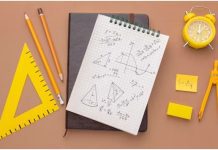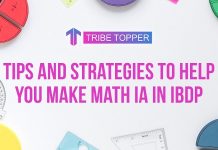What are the learning styles?
This is a question that does not have a single answer since there are various theories about it. Everything indicates that people do not have a single learning style throughout their lives or in different situations, but a unique combination of several of them and that they have to do with cognitive, emotional, early upbringing, and predisposition factors. biological, contextual, environmental, etc.


Next, we will see some of the most important styles of different models. It is essential that the teacher uses them only as a guide and not as pre-established moulds to “label” the learning style of each student. Here Blue Bells Public School discuss some different learning styles below in this blog.
Active learning (adapters or “doers”)
It manifests as an impulse to experiment and come into direct contact with new experiences without having to analyze them too much, without resistance to change or fear of challenges. For example, those in a laboratory are more interested in doing the experiment than in knowing the underlying theory.
In some situations, students may have an active learning style, while in others they prefer to observe and reflect from a distance.
Reflective learning (divergent)
It is a preference to observe a situation and absorb as much information as possible about it before coming into contact with it or experimenting. Students with a reflective style perform better on tasks that can be analyzed in detail before drawing conclusions. They are also characterized by high creativity.
For example, kids with reflective learning styles first figure out all the possible outcomes of an experiment with different variables before doing it.
Theoretical learning (conceptualizers)
This learning style manifests itself with a high interest in understanding the “why” of things and in integrating facts into coherent, solid and complete theories as possible. They tend to give priority to the data or information available in the academic material, over direct observation of the facts.
These kinds of students often take it for granted that the experiment will have the expected results and are more concerned with understanding exactly what causes those results.
Pragmatic learning (convergent)
Students with this learning style prefer to know the “why” of things and are more motivated to achieve specific goals than to integrate abstract theories. They usually need to check the information first hand and it is easy for them to lose interest when there are no opportunities for direct experimentation or concrete goals.
Continuing with the example of the laboratory, once the experiment has been carried out, it is the students who will typically ask “And how can this be applied in real life?”.
Auditory learning
Some students learn better when they hear the information or when it is accompanied by sounds that they can associate with the concepts. For example, it is easier for them to absorb and retain the lesson if the teacher says it than if they read it in a book, and they remember songs or sound sequences more effectively than images.
Visual learning
It is the counterpart of auditory learning. Students with this learning style may find it difficult to follow the flow of an oral lesson, but they retain and understand graphic texts and images with great ease.
Kinesthetic learning
The student learns and retains better when his body comes into direct contact with the experience and when he can link the information to a tangible element of his physical world. For example, they will have difficulty understanding the diagram of a hypotenuse, but will quickly grasp the concept if the teacher allows them to find real hypotenuses in the classroom.
Verbal learning
Unlike visual learners, students who are better at dealing with verbal language, whether spoken or written, have a great facility for connecting facts and abstract concepts as long as they have a linguistic base to which to anchor them, regardless of whether they are listening or reading them. They also retain much better when they write the lesson themselves.
Mathematical logical learning
While verbal learning is based on the structure of language, students with a more logical or mathematical style prefer to use diagrams, equations, and visual associations of abstract concepts, such as numbers and symbols.
Social or interpersonal learning
It refers to students who learn more and better in group contexts or teamwork. They share their conclusions with others and prefer to take other people’s points of view into account when learning or experimenting.
Intrapersonal learning
Some students prefer silence and solitude to concentrate better. This does not mean that they are antisocial or introverted, but that it is easier for them to learn and consolidate knowledge when there are no other people distracting them.
We all have a multimodal learning style. As human beings, we are flexible, unique and adaptable, so not only what works for one may not work for another, but there can be significant changes in preferences and ways of learning over time.
How to identify the different learning styles?
Based on the philosophy of inclusive education, it is essential that educational centres, course design, classrooms and other teaching environments have tools and materials that can be adapted to all forms of learning. But how do you know exactly what each student needs on a day-to-day basis?
Ideally, in secondary or upper secondary education, students already have some self-knowledge that allows them to identify for themselves and choose the ways in which they prefer to learn, but in the case of preschool or primary students, have the following questions on hand to personalize teaching can be of great help:
- To what kind of stimuli does the student respond with the most enthusiasm and interest? To the images, to the music, to the games in which he must move?
- What objects or study materials in the classroom do you approach spontaneously? drawing materials, stuffed animals, or building blocks?
- What do you do with the information or with the objects that you have at hand? It is not the same to use a flute to play a melody as to use all the flutes in the room to build a tower.
- What kind of games does the student prefer? Competitive, cooperative, individual or group games?
How do you orient yourself in time to carry out an activity? Do you first express the results you hope to obtain in the future, or do you draw on the knowledge you obtained in the past? Do you plan carefully or jump right into action?
Some questions or requests that we can ask the student directly and that give us very valuable clues about the metaphors, tools, themes or stimuli they prefer are:
Show me a dog/cat/song/hero etc!
Faced with these open requirements, a student can choose to ground the concept in different ways. For example, barking or meowing like an animal, or looking for a physical representation of it; singing a song, or writing the lyrics to one, even dancing while humming. You can draw your favourite hero or wear your coat as a cape and pretend to fly around the room.
Help me invent a new game!
With what type of stimuli and concepts does the student prefer to start building the game? Is it a “mind game” where only the ingenuity of the participants is required? Is it a game of skill with the hands? Is it a complex role-play with supporting physical elements? Is it a graphic game? verbal? musical? One person, two or more?
Show me what you’re going to do when you grow up!
Again, the student can draw an astronaut on a piece of paper, choreograph as a dancer, find a gown and represent himself as a doctor, build a building with blocks as an architect, act out a phone call with his assistant as if you were a high-level executive, or just talk in great detail to the professor what it will be like one day in your life when you become a great chef.
Tell me a story
This is an ideal question to identify not only learning styles but also communication styles. Some students may tell their story orally, others may write it down in their notebooks, or draw it on sheets of paper. Some will use toys as puppets and others will agree with their classmates to represent the story as a play.
Those who choose to tell the story orally may accompany their narration with many movements or may prefer to modulate the tone of their voice to signal important moments.
As you can see, knowing the learning styles of your students is not only important, it is also very enriching and fun.
















